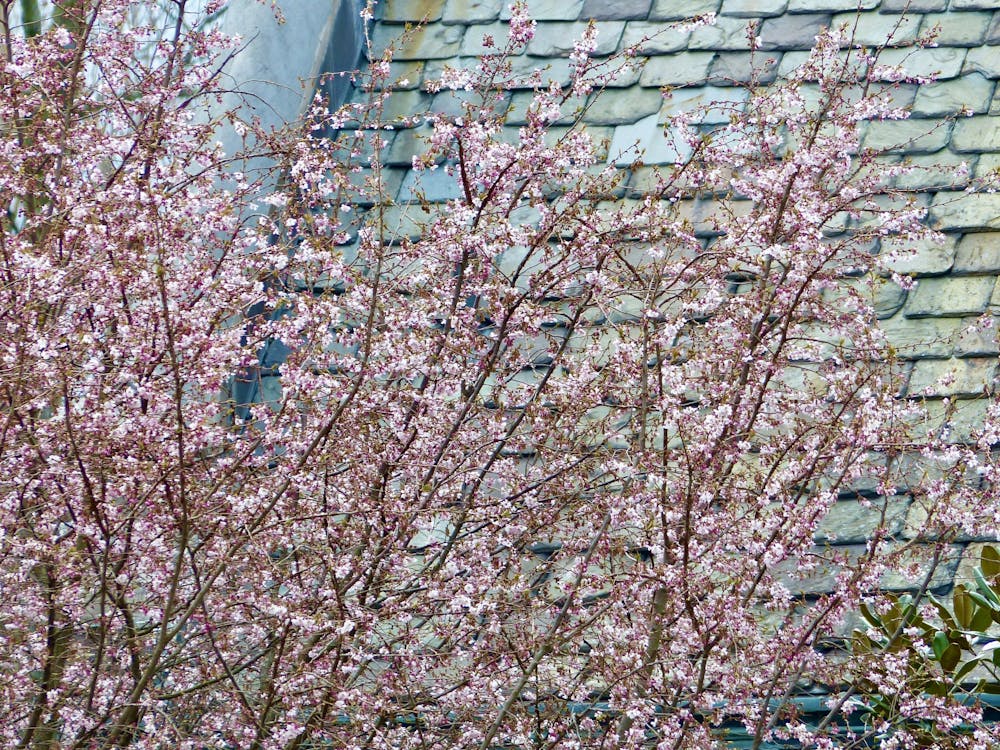Preliminary plans for a new down-campus neuroscience building may have already hit a snag: a two-year-old USG resolution urging a stop to construction in the area of Poe Field, which is located to the south of campus. University officials are confident, however, that proposed construction would not violate the resolution.
Though plans for the new building are in the very early stages, the most frequently cited location possibility is south of the Carl Icahn Laboratory, near the current location of parking lot 20.
University press releases have mentioned this area as a possibility, and both Provost Christopher Eisgruber '83 and Vice President and Secretary Bob Durkee '69 confirmed that the location is being considered.
"The most likely location is to the south of the Icahn Laboratory, but no decisions have yet been made about either the site or the timing of the project," Eisgruber wrote in an email.
A neuroscience building located there, however, might push the boundaries of the USG's Poe Field Resolution and ostensibly renege on a promise made by the University four years ago.
In February 2002, then-Vice President and Secretary Tom Wright '62 told The Daily Princetonian that the University would never build south of Poe Field. "This plan is explicitly intended to create for all time a southern boundary to the expansion of the campus," Wright said.
This promise was consistent with the Poe Field Resolution, which the USG passed in 2004. It stipulates that "[r]egardless of future developments, the University establishes the line of buildings consisting of the Genomics Institute, Scully Dorm and the new dorm adjacent to Scully as the southern edge of Princeton's main campus. The University should preserve the spaces between these buildings and Lake Carnegie by not building upon them."
But building is what the University plans to do. Nassau Hall does not, however, consider the current plans a threat to the resolution's guiding principle of leaving Poe as it is.
"When the University created an ellipse out of Bloomberg, Scully and Icahn, what they created was an attractive northern edge of those fields," Durkee said. "The concern was to preserve that open space and that vista from those buildings looking to the south. That is still the guiding principle and I don't think anything that's being discussed about the new neuroscience building would contradict that."
Birth of a resolution
The idea behind the USG resolution came out of general concern over a diminishing amount of green space on campus, especially with major construction plans like Whitman College afoot, Parry said.
U-Councilor Brandon Parry '06, who made the motion to pass the resolution in 2004, explained its original intent.
"The USG felt that it should make a stand on behalf of students by articulating the value of green space on campus," Parry said. "The body felt that green spaces have positive side effects for our mental and physical health and we didn't want to see them disappear."

"Part of the motivation involved asking the University to make a commitment to not infringe on the current green space," Parry added. "We hoped, and still hope, that the ... elliptical area that had been demarcated after the construction of Bloomberg and Icahn was going to remain an inviolate green space for people to go."
Parry noted, however, that "[t]he Poe Field resolution is not binding. It was written with a firm belief in the value of having a good outlet for physical recreation on campus. The resolution simply represented a way to codify that sentiment."
The resolution was regarded as a "proactive way to preserve green space," according to the USG meeting minutes.
Preservation of Poe Field has often been a concern of students who use it as a recreational space. The Graduate Student Government, for instance, called for increased maintenance of the field in 2004.
Current students, however — many of whom have never heard of the resolution — do not seem to be concerned about construction near the field.
"I don't remember the last time they had construction there, but I don't think it really affected the fields that much. I don't think it was a big deal," said Jean Hsu '08, a member of the Women's Ultimate Frisbee team, which practices on the field.
Durkee echoed that sentiment, stating that it was too early in the planning stages to tell how construction would affect the field.
"I don't think we're far enough along to be thinking about where construction vehicles would be," he said. "The site hasn't been selected, and until you select the site you can't get to that level of detail."
He also reaffirmed the University's commitment not to touch the area that makes up Poe and Pardee fields.
"Preserving that green space has been very much a part of the campus plan; that's why the buildings around the ellipse were designed as they were. Certainly as we think about future development ... what we'll be careful to do is preserve that space."







